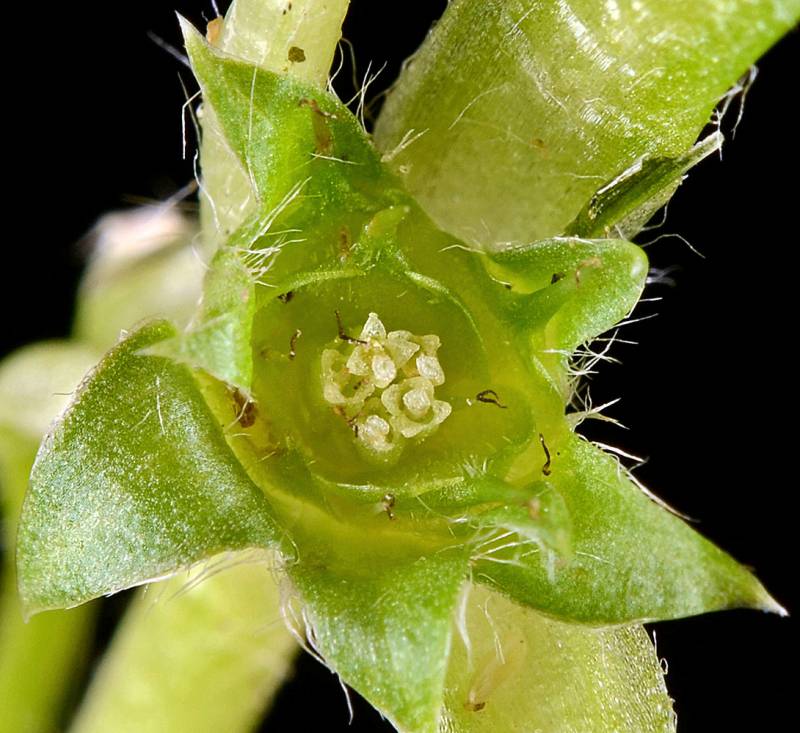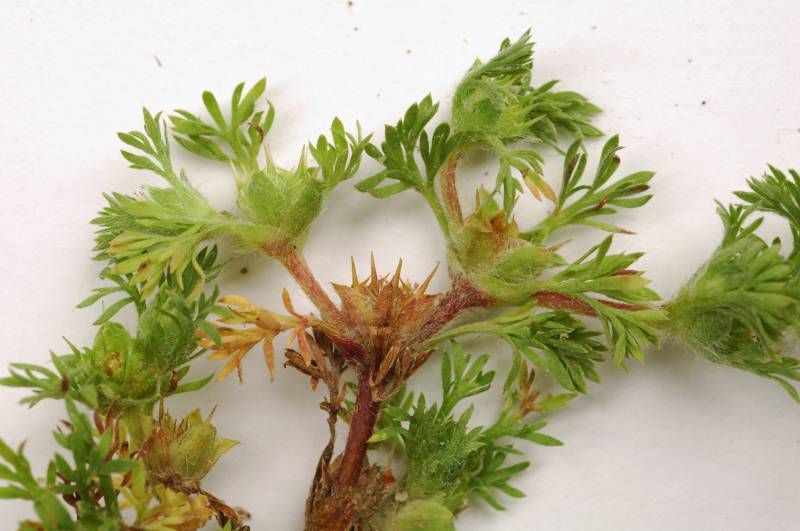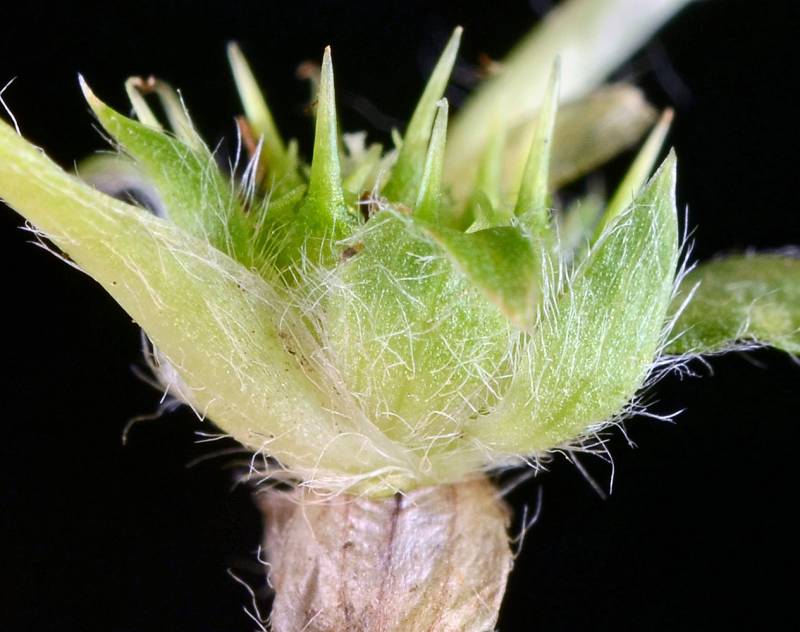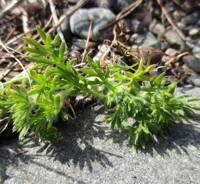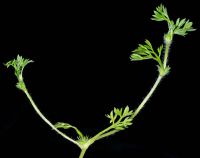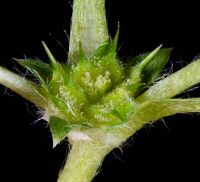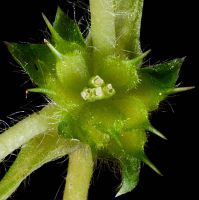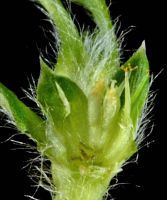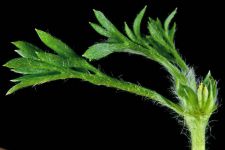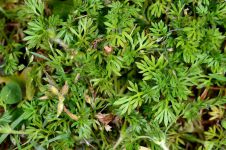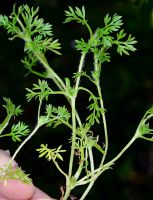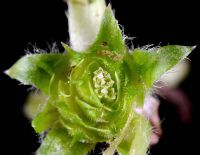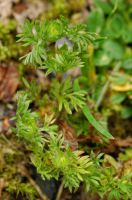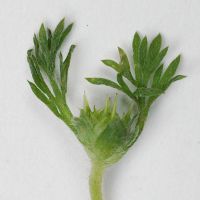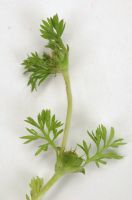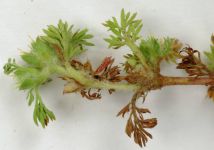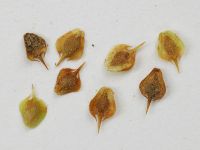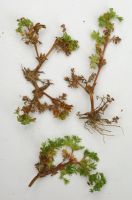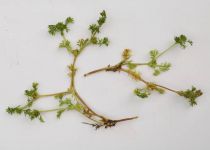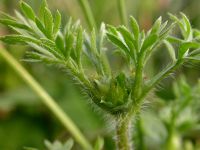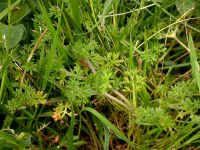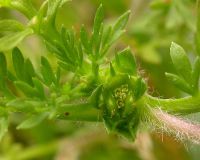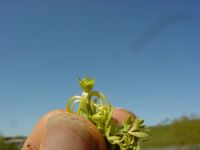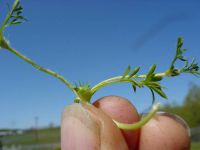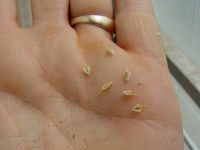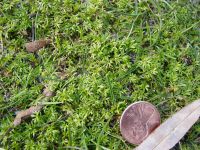Distribution: Occurring west of the Cascades crest in lowland western Washington; British Columbia to California, also in south-central and southeastern U.S.
Habitat: Disturbed areas, roadsides, and lawn areas at low elevations.
Flowers: March-June
Origin: Introduced from South America
Growth Duration: Annual
Conservation Status: Not of concern
Pollination: Bees, flies, beetles, wasps
Glabrous, taprooted annuals, the stems prostrate to ascending, 2-5 cm. high or across, purplish, often rooting at the nodes.
Leaves basal and cauline, 1-2 cm. long, oblanceolate, pinnati-palmately lobed.
Heads scattered along stems, single in the leaf axils; involucres 2-4 mm. in diameter; corollas all tubular, 1.5-2.5 mm. long, the outer 5-8 pistillate, the inner 4-8 perfect; pappus none.
Achenes obovate to lanceolate, 2.5-3 mm. long, usually winged.
Publication: Syst. Veg. Fl. Peruv. Chil. 113, plate 24. 1798.
PNW Herbaria: Specimen records of Soliva sessilis in the Consortium of Pacific Northwest Herbaria database
WA Flora Checklist: Soliva sessilis checklist entry
OregonFlora: Soliva sessilis information
E-Flora BC: Soliva sessilis atlas page
CalPhotos: Soliva sessilis photos

